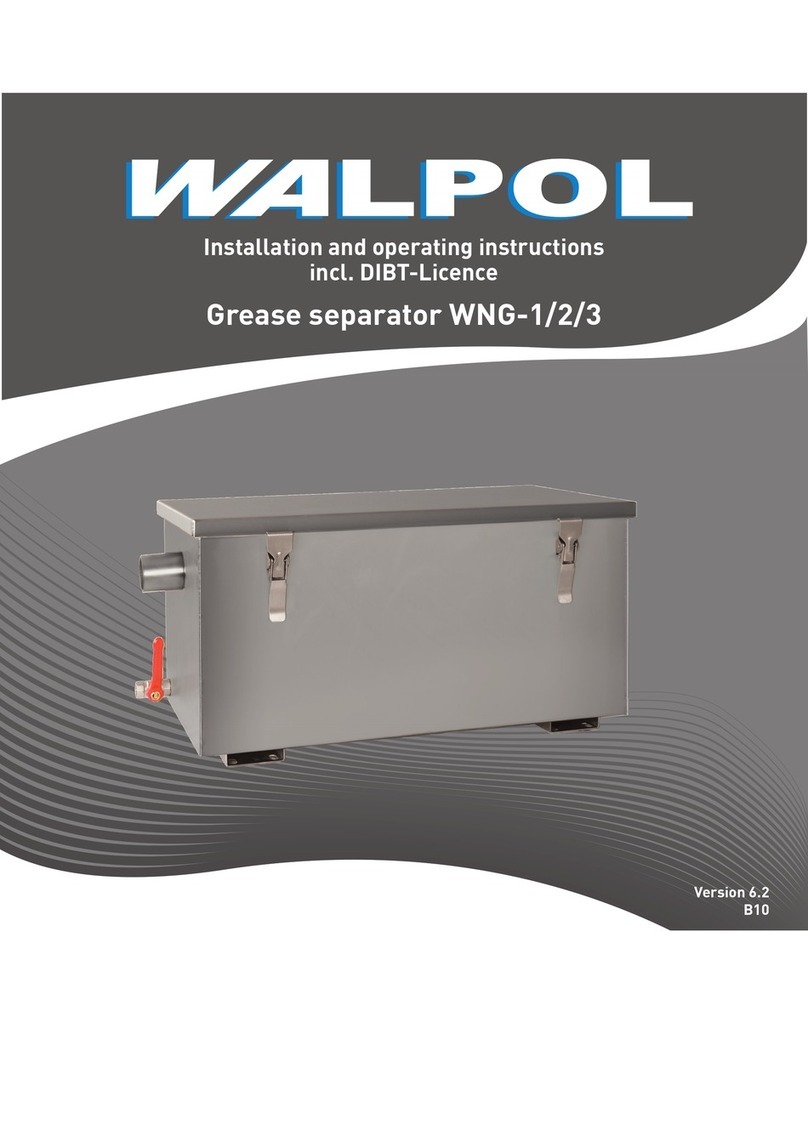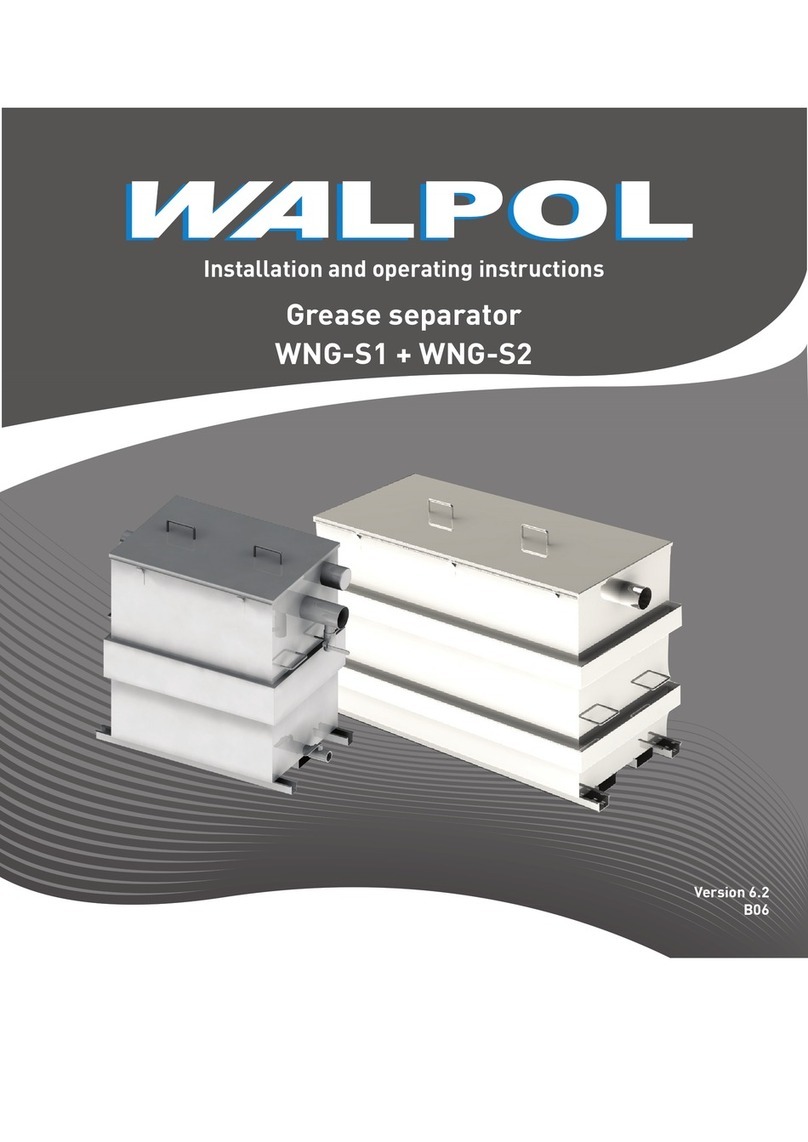
7
Unpacking
Warning
When removing the transport packaging, there is a risk of damage from sharp edges, nails, staples, splinters, etc.
• Unpack the grease separator carefully.
• Check the grease separator for obvious transport damage.
• Do not remove the packaging until just before installation.
• Wear the protective equipment for any work in the vicinity of the grease separator, see . Personal protective
equipment. . Personal protective equipment
Transport
Safety instructions
Caution: Careless loading or unloading can damage the grease separator.
• Carry out loading or unloading carefully.
• Use lifting equipment designed for the load.
• Observe the transport arrows on the packaging.
• The packaging is only used as transport protection and must not be used for lifting.
Storage
• Store the grease separator in its original packaging in a dry, dust-free place protected from the weather.
• Avoid exposure to extreme heat or cold.
5. Description
5.1. Grease separator WNG-S1/S2
A grease separator is used wherever waste water containing grease is to be expected. The grease separator separates
grease, oil and sludge from the waste water. Thanks to the flushing and disposal device, the grease separator can be dis-
posed of with virtually no odour nuisance, as the odour-tight system does not have to be opened for this purpose. The hose
of the disposal vehicle can be connected to the permanently installed disposal line, which is routed to an easily accessible
point. The separated grease is pumped directly into the disposal vehicle. This eliminates the time-consuming and unhy-
gienic laying out of the disposal hoses through utility and storage rooms (e.g. food areas). In addition, there is no odour
nuisance.
5.2. Grease separator data
Type WNG-S1
Nominal size 1
Sludge trap 100 litres
Grease separator chamber 120 litres
Weight 103 kg
Type WNG-S2
Nominal size 2
Sludge trap 200 litres
Grease separator chamber 482 litres
Weight 143 kg
5.3. Intended use
The separator system is intended exclusively for the separation of saponifiable oils and fats of vegetable and animal origin.
Any other use is considered improper. The manufacturer is not liable for any resulting damage; the risk for this is borne
solely by the user!
Animal and vegetable oils and fats must not be discharged into the public disposal systems and into bodies of water, as they
cause cross-sectional constrictions and blockages of the disposal pipes when cold. Furthermore, after a short decomposi-
tion time, fatty acids are formed, which lead to unpleasant odours and attack pipes and structures of the drainage systems.
The solidified layer of grease on the water surface also inhibits the necessary oxygen supply to water bodies and sewage
treatment plants. In addition, DIN1986 Part 1 requires the retention of harmful substances. For these reasons, grease se-
parators must be provided and disposed of appropriately. The temperature in the separator should be as low as possible. An
increase of 10°C halves the separation efficiency.
Compliance with the operating, maintenance and servicing conditions prescribed by the manufacturer is also part of the
intended use.
6. Installation
6.1. Installation location / prerequisites
Outdoor installation in frost-free rooms
Before installing the grease separator, check the following:
Separator systems should be installed near the points where the waste water is produced. Furthermore, the suction
connection should be easily accessible for cleaning vehicles.
• The system should not be installed near recreation rooms, especially not near windows or ventilation openings, so that
odour nuisance is avoided
• It should be easily accessible for cleaning vehicles
• Room with good ventilation or/and aeration as well as level and sufficiently load-bearing installation surface (observe
stability/ceiling load)
• Room temperature at least 15°C.
• Sealed floor covering with integrated drainage point.
• Hot and cold water connection
• Room height at least 60 cm higher than the grease separator system so that the inspection cover can be opened during
cleaning work.
• Free working space, at least 1 m, in front of the grease separator system.
• The waste water must be fed to the grease separator system in a free fall
• Inlet with calming section of at least 1 m (gradient 1:50).





























